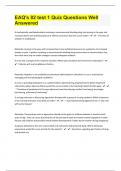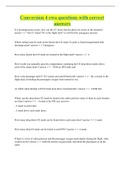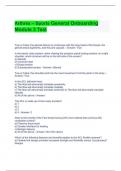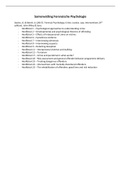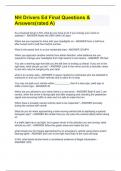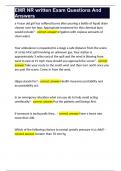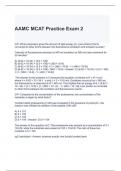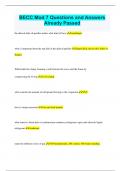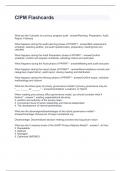Exam (elaborations)
EAQ's 82 test 1 Quiz Questions Well Answered|2024
- Course
- Institution
A mechanically ventilated patient receiving a neuromuscular blocking drug has tearing in the eyes and increased heart rate and blood pressure. Which conclusion does the nurse make? - ️️The level of sedation is inadequate. Rationale: tearing in the eyes and increased heart rate and blood pre...
[Show more]
